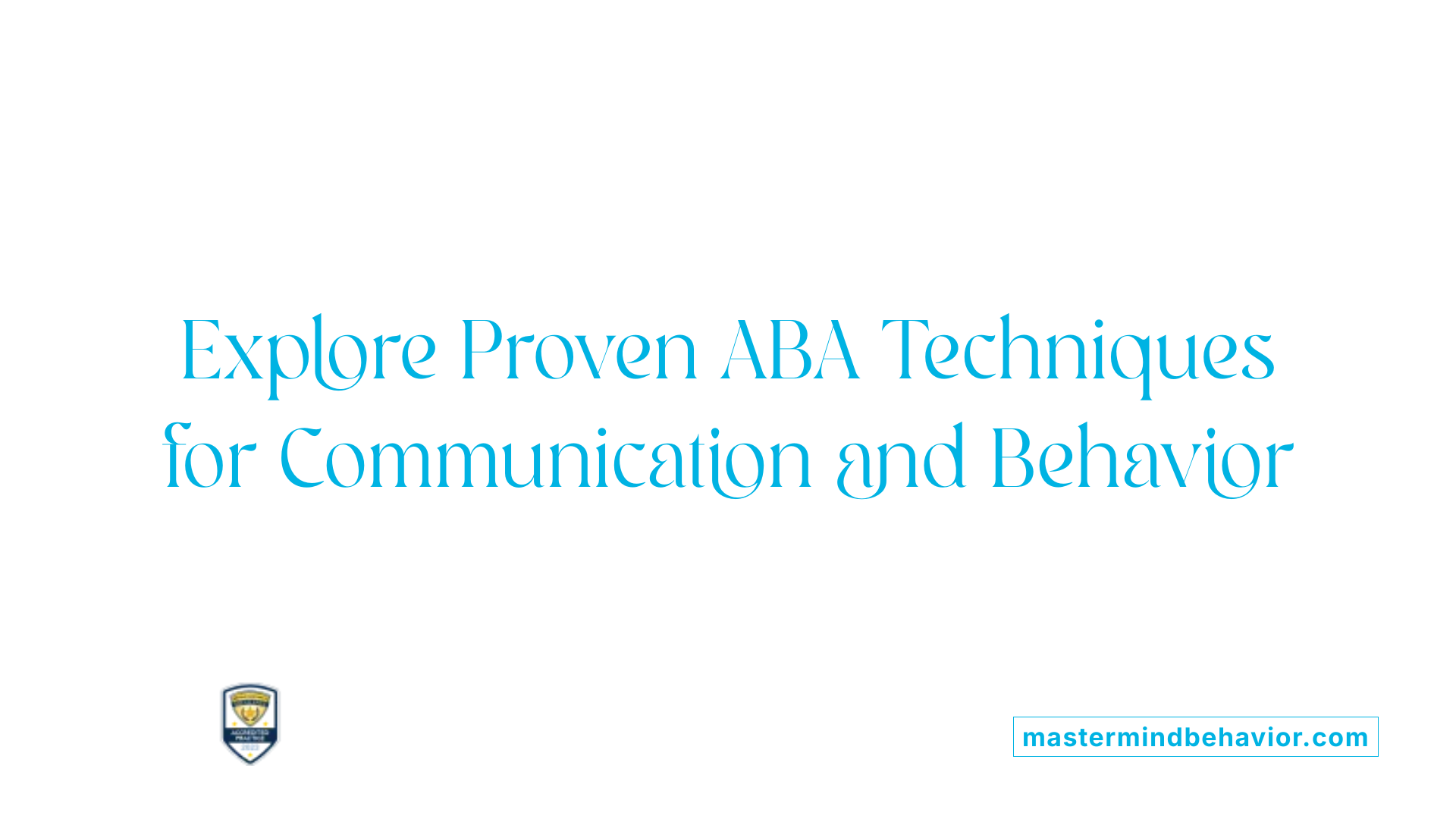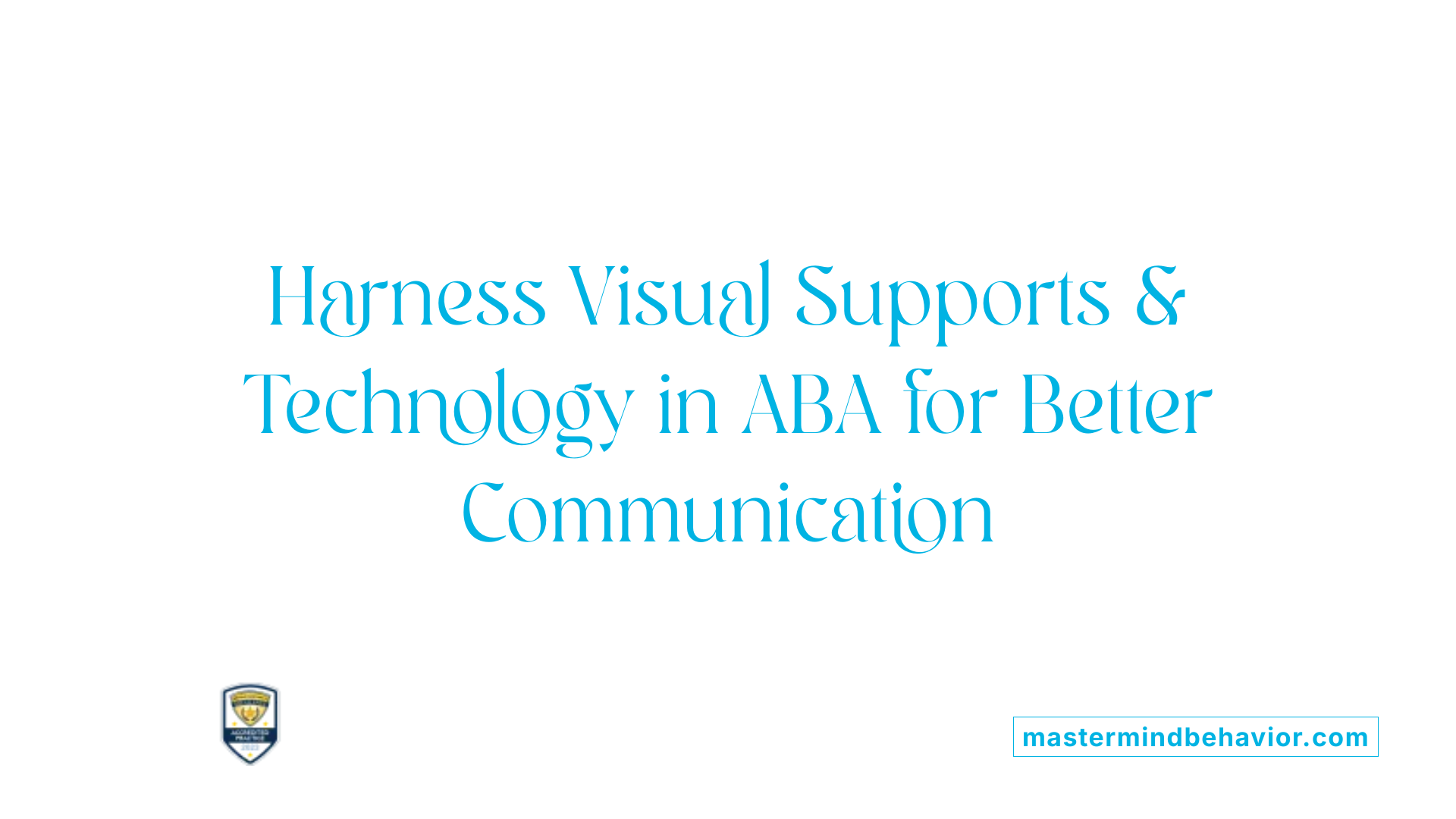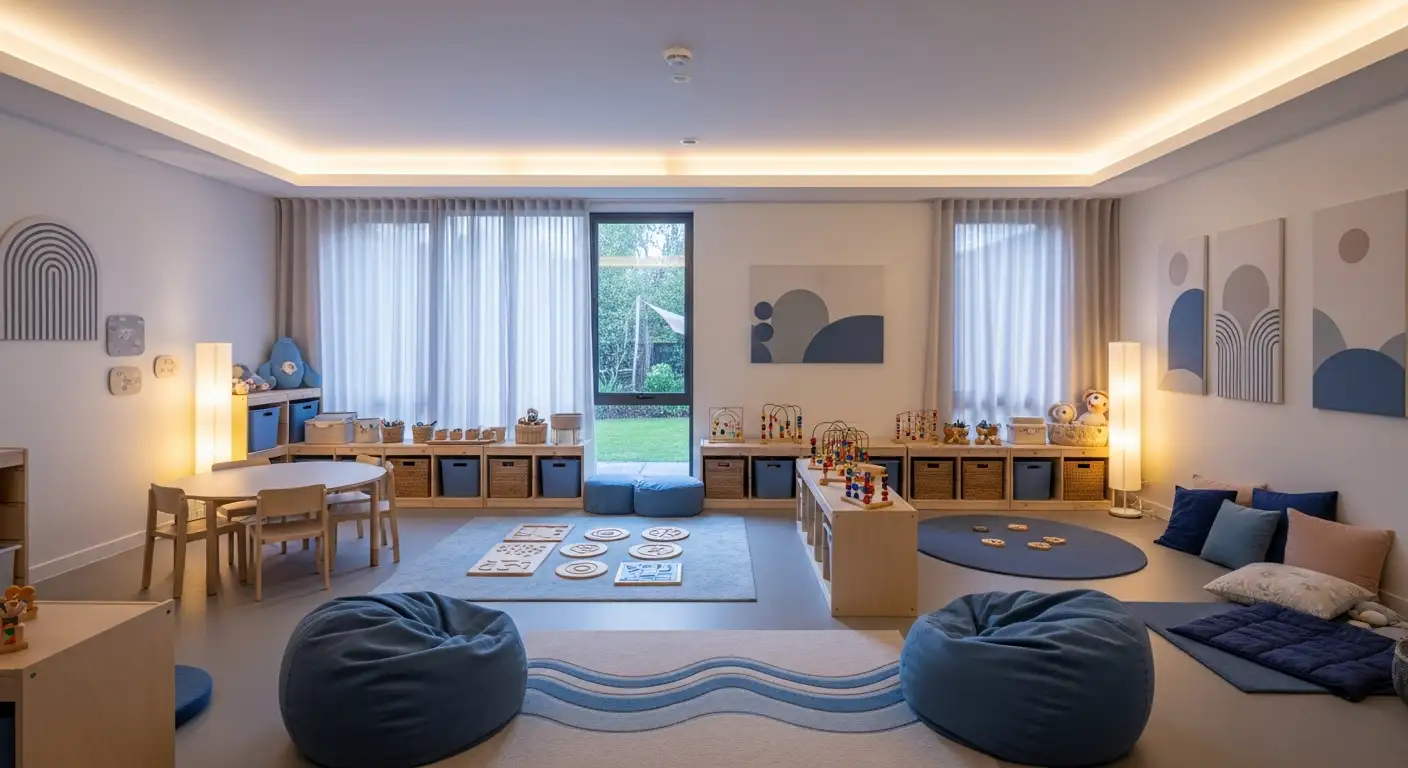Understanding ABA Therapy’s Impact on Communication and Self-Expression
Applied Behavior Analysis (ABA) therapy stands as a scientifically validated approach aimed at fostering meaningful communication and self-expression in children and individuals with autism spectrum disorder (ASD). By focusing on personalized behavioral interventions, ABA equips individuals with essential social and verbal skills, enabling them to engage more confidently with their environment and express themselves effectively. This article explores how ABA therapy nurtures these abilities through evidence-based methods and tailored strategies.
What Is Applied Behavior Analysis (ABA) Therapy?
What is Applied Behavior Analysis (ABA) therapy?
Applied Behavior Analysis (ABA) therapy is a scientific approach grounded in the principles of learning theory, especially operant conditioning. It focuses on understanding the relationship between antecedents (what happens before a behavior), behaviors themselves, and consequences (what happens after), often termed the A-B-C model. The goal is to reinforce positive, socially significant behaviors while reducing harmful or disruptive ones through methods such as positive reinforcement, prompting, and extinction.
ABA therapy programs are highly individualized. Certified professionals called Board Certified Behavior Analysts (BCBAs) design these plans based on thorough assessments to address the unique strengths and challenges of each person. Trained therapists then implement these plans, ensuring that interventions are tailored and responsive.
Key objectives of ABA include improving communication, enhancing social interaction, and developing daily living skills. This approach can help individuals with autism spectrum disorder (ASD) and other developmental differences by teaching them functional skills necessary for independence and success in daily life.
Decades of research support the effectiveness of ABA across different age groups. Intensive and consistent application of ABA techniques has been shown to significantly improve developmental outcomes, making it one of the most evidence-backed therapies available today.
Techniques ABA Uses to Foster Communication and Behavioral Skills

Positive reinforcement and its role in behavior repetition
Positive reinforcement is a cornerstone of ABA therapy, where rewarding social behaviors with praise, tokens, or preferred activities encourages children with autism to repeat those behaviors. This method strengthens communication and social skills by making desirable actions more likely to occur frequently.
Prompting and fading techniques for skill acquisition
ABA therapists use prompting to guide children through new skills, providing cues or assistance as needed. Over time, these prompts are gradually faded to promote independent skill use. This approach supports effective learning without over-reliance on supports.
Discrete Trial Training (DTT) and Natural Environment Teaching (NET)
DTT provides structured, step-by-step instruction to teach specific skills in a controlled setting. In contrast, NET encourages learning during everyday activities and natural interactions, making communication practice more functional and generalizable.
Role-playing and structured group activities to build social and communication skills
Role-playing exercises within ABA allow children to rehearse social situations safely, enhancing recognition of social cues and conversational skills. Structured group sessions foster peer interactions where children practice greetings, turn-taking, and sharing under therapist guidance, promoting social bonds.
Use of visuals and technology to support learning
Visual supports such as picture exchange communication systems (PECS) and devices like iPads aid understanding and expressive speech. Technological tools, including AI and virtual reality, assist in teaching verbal skills and generalization by providing engaging, interactive learning experiences.
Incorporating music therapy and multi-modal methods
Combining ABA with music therapy has proven effective in boosting speech production, especially in verbal operants like echoic and tact responses. Multi-modal strategies that integrate visual aids, stimulus fading, and alternative therapies enhance overall communication development.
| Technique | Purpose | Description |
|---|---|---|
| Positive Reinforcement | Encourage behavior repetition | Rewards desired actions to increase their frequency |
| Prompting and Fading | Ensure skill acquisition | Gradually reduces assistance to promote independence |
| Discrete Trial Training (DTT) | Teach specific skills | Structured, stepwise instruction in controlled settings |
| Natural Environment Teaching (NET) | Promote functional communication | Teaching within everyday interactions |
| Role-playing | Practice social scenarios | Safe rehearsal of conversations and social cues |
| Group Activities | Enhance peer interaction | Guided social skills development with peers |
| Visual Supports & Technology | Support understanding and speech | Use of picture systems, tablets, AI, and VR tools |
| Music Therapy & Multi-modal Methods | Boost verbal operants and general communication | Incorporation of music, visuals, and alternative therapies |
ABA’s Role in Building Social Communication and Self-Expression

How Does ABA Teach Recognition of Social Cues, Body Language, and Facial Expressions?
ABA therapy uses behavior analysis principles to help children with autism spectrum disorder identify and interpret social cues, body language, and facial expressions. This foundational skill improves their social understanding and enables them to engage more effectively in social interactions.
What Is the Role of Role-Playing Exercises in ABA?
Role-playing exercises in ABA create a safe space for children to practice social scenarios. These rehearsals enhance their ability to recognize social cues, develop conversational skills, and build social confidence. Through repeated practice, children become better prepared for real-life social interactions.
How Do Group Sessions and Peer Interactions Support Social Learning?
Structured group sessions and peer interaction opportunities allow children to observe and practice social behaviors. Under the guidance of a trained therapist, children engage in social exchanges that foster peer bonding and social skill acquisition, which are essential for community integration.
What Structured Social Skills Does ABA Focus On?
ABA therapy systematically targets social behaviors such as greetings, turn-taking, sharing, and maintaining eye contact. These structured skills form the foundation of effective social communication and help children navigate everyday social settings.
How Is Positive Reinforcement Used to Encourage Social Engagement?
Positive reinforcement in ABA involves rewarding social behavior with praise, tokens, or preferred activities. This approach motivates children to repeat positive social interactions, thereby strengthening and generalizing their social skills over time.
| Aspect | Description | Benefit |
|---|---|---|
| Social Cue Recognition | Teaching interpretation of body language and facial expressions | Improved understanding of others' emotions and intent |
| Role-Playing Exercises | Safe rehearsal of social conversations | Increased social confidence |
| Group Sessions and Peer Interaction | Practice in real social scenarios guided by therapists | Enhanced peer bonding and social skill practice |
| Structured Social Skills | Focus on greetings, turn-taking, sharing, and eye contact | Foundation for effective social interactions |
| Positive Reinforcement | Rewarding desired social behaviors | Encourages repetition and generalization of skills |
The Integration of Visual Supports and Technology in ABA Communication Therapies

How are picture exchange communication systems (PECS) used in ABA therapy?
PECS are visual tools that allow children with autism to communicate by exchanging pictures to express needs and thoughts. In ABA therapy, PECS facilitate understanding and expressive speech by providing a concrete way for children to convey messages before verbal skills fully develop.
What technology tools enhance expressive speech in ABA?
Technological tools like iPads, AI applications, and virtual reality are increasingly incorporated into ABA therapy. These devices offer interactive, engaging platforms for practicing communication, enabling children to develop verbal skills through multimedia content, virtual social scenarios, and personalized learning experiences.
What are the benefits of combining visual supports with verbal shaping techniques?
Combining visual supports such as PECS or communication apps with verbal shaping techniques—where speech is gradually molded and encouraged—helps reinforce expressive communication. This approach promotes better retention and faster acquisition of verbal skills by addressing various learning styles and sensory preferences.
How do augmentative and alternative communication (AAC) systems fit into ABA?
AAC systems, including communication boards and speech-generating devices, provide alternative methods for children to express themselves when verbal communication is challenging. ABA therapists integrate AAC tools to tailor communication strategies that suit individual needs, thereby expanding the child's ability to interact socially and functionally.
How is generalization of communication skills facilitated across settings?
Use of visual supports and technology in ABA helps generalize learned communication skills beyond therapy sessions. These tools provide consistent cues and prompts that children can utilize at home, school, and community settings. Technology-enabled methods like AI and virtual reality also simulate diverse real-world environments, aiding adaptability and confidence.
| Visual Supports and Technology in ABA Communication | |---|---|---| | Tool/Method | Description | Therapeutic Benefit | | PECS | Picture exchange communication system | Enables nonverbal children to communicate basic needs effectively | | iPads & Apps | Interactive platforms for practice | Enhances engagement and personalized learning experience | | AI & Virtual Reality | Simulated social interactions | Facilitates versatile skill generalization in safe settings | | AAC Systems | Communication boards and devices | Provides customizable communication modes for diverse needs | | Verbal Shaping & Visual Aids | Combination approach | Strengthens verbal production through multisensory reinforcement |
Addressing Communication Challenges and Social Anxiety Through ABA

How Does ABA Use Gradual Exposure to Reduce Social Anxiety?
ABA therapy helps children with autism gradually become comfortable in social situations by slowly introducing them to various social scenarios. This step-by-step exposure allows children to face social challenges in a controlled, supportive environment, reducing anxiety over time.
What Relaxation and Mindfulness Techniques Are Taught?
To support emotional regulation, ABA incorporates relaxation strategies and mindfulness training. These techniques help children manage stress and maintain calm during social interactions, improving their ability to engage confidently.
How Are Scripts and Prompts Used to Manage Social Stress?
ABA therapists provide scripts and verbal prompts tailored to each child’s needs. These tools serve as guides to navigate conversations and social exchanges, reducing confusion and stress by clarifying what to say and do in different social contexts.
What Self-Management Skills Does ABA Develop?
Beyond social skills, ABA fosters self-management skills such as goal setting, emotional control, and time management. Teaching these skills empowers children to independently regulate their emotions and behavior in social settings.
How Does ABA Customize Strategies Based on Assessments?
ABA therapy begins with individualized assessments to identify specific communication challenges and anxiety triggers. Based on this, therapists design personalized interventions targeting relevant social skills and emotional difficulties, ensuring effective and lasting improvements.
Who Provides ABA Therapy and How It Is Delivered for Optimal Communication Outcomes
Professionals Who Provide ABA Therapy
ABA therapy is administered by a range of trained professionals dedicated to supporting individuals with autism spectrum disorder and related developmental challenges. Chief among these are Board Certified Behavior Analysts (BCBAs), who hold advanced qualifications in behavior analysis. Alongside BCBAs, Registered Behavioral Technicians and therapists with specialized training play critical roles in day-to-day therapy delivery.
Delivery Methods of ABA Therapy
ABA is adaptable and delivered through various formats tailored to individual needs. Individualized, one-on-one sessions are common, taking place in settings such as the child’s home, schools, or clinical environments. Group therapy and social skills groups offer important opportunities for peer interaction and social learning. To increase accessibility, telehealth methods—using video conferencing and remote parent coaching—are now widely integrated, allowing flexible, family-friendly therapy delivery.
Family Involvement and Training
Integral to successful outcomes in ABA therapy is active participation from families. Therapists collaborate closely with parents and caregivers, providing training and strategies to embed ABA techniques into daily routines. This support helps promote consistency and generalization of communication and social skills outside of therapy sessions.
Holistic Collaboration with Related Therapists
A comprehensive approach often involves coordination between ABA providers and other specialists like speech, occupational, and physical therapists. This interdisciplinary teamwork ensures that therapy targets multiple developmental areas, providing a well-rounded support system that caters to the child's overall growth.
Personalized, Evolving Intervention Plans
Each individual’s needs are thoroughly assessed to identify communication challenges and social skill goals. Based on these assessments, therapists develop personalized ABA plans that evolve over time. This tailoring includes setting goals such as improving eye contact, initiating conversations, or understanding emotions, ensuring therapy remains responsive and effective as the child progresses.
| Aspect | Description | Benefits |
|---|---|---|
| Providers | BCBAs, Registered Behavioral Technicians, therapists, specialists | Ensures professional, evidence-based care |
| Delivery Settings | Home, school, clinic, group sessions, telehealth | Flexible and accessible therapy |
| Family Participation | Parent training and involvement tailored to daily life | Supports skill generalization |
| Collaborative Support | Integration with speech, occupational, and physical therapy | Addresses broad developmental needs |
| Personalized Plans | Individualized goals based on comprehensive assessments | Maximizes effectiveness and progress |
What Progress Families Can Expect From ABA Therapy in Communication and Self-Expression

What kind of progress can families expect from ABA therapy?
Families enrolled in ABA therapy often observe steady, measurable improvements across several domains. This includes enhanced language skills such as improved vocal and expressive communication, facilitated by methods like verbal shaping, visual supports, and positive reinforcement. Social skills also develop significantly, with children learning to interpret social cues, initiate conversations, maintain eye contact, and manage anxiety through gradual exposure and relaxation techniques.
Measurable improvements in language and social skills
ABA therapy's evidence-based approach promotes communication skills ranging from prelinguistic behaviors (joint attention and gestures) to complex verbal interactions. Role-playing exercises and group sessions provide a safe environment to rehearse social scenarios, fostering conversational abilities and empathy. Visual aids like picture exchange systems and technology further support expressive speech development.
Reduction in problem behaviors and social anxiety
By identifying triggers and using tailored strategies, ABA reduces challenging behaviors while teaching coping mechanisms for social anxiety, including scripted responses and mindfulness practices. Children gain confidence and comfort in social settings, which contributes to overall emotional regulation.
Increased independence and quality of life
ABA emphasizes practical daily living skills such as self-care, task completion, and emotional regulation, enabling individuals to function more independently. Family involvement ensures that newly learned skills are generalized into daily routines, leading to better family dynamics and reduced stress.
Steady progress with ongoing assessment and tailored goals
Initial assessments identify specific areas for growth, allowing therapists to set personalized, evolving goals that reflect each child's unique needs. Continuous monitoring ensures strategies adapt to progress, optimizing developmental outcomes.
Empowerment of individuals to engage meaningfully in their communities
With strengthened communication and social abilities, individuals become better equipped to navigate social situations, build relationships, and participate in community life. ABA therapy supports not only children but adults as well, focusing on workplace skills and adult social interactions.
| Area | Expected Progress | ABA Techniques Involved |
|---|---|---|
| Language & Communication | Expanded expressive and receptive abilities | Verbal shaping, visual supports, music therapy |
| Social Skills | Improved interaction, empathy, and confidence | Role-playing, group sessions, positive reinforcement |
| Behavior & Anxiety | Reduced challenging behaviors and anxiety | Trigger identification, relaxation training |
| Independence | Enhanced self-care and daily skills | Task analysis, family involvement |
| Community Engagement | Greater participation in social and work settings | Customized goals, social skills development |
The Transformative Power of ABA in Encouraging Self-Expression
ABA therapy provides a deeply personalized and scientifically grounded framework that empowers individuals with autism to develop vital communication and social skills. By leveraging a range of evidence-based techniques—such as positive reinforcement, role-playing, visual supports, and technology-assisted interventions—ABA fosters not only verbal expression but also confidence in social interaction. Through consistent, individualized efforts supported by skilled professionals and family involvement, ABA helps individuals overcome communication challenges and social anxieties, paving the way for greater independence and enriched relationships. Ultimately, ABA’s role in encouraging self-expression is transformative, helping pave pathways for each individual to articulate their unique voice and connect meaningfully with the world around them.
References
- ABA therapy enhances Social Skills
- (PDF) Role of Applied Behavior Analysis in Developing ...
- Benefits of ABA Therapy for Children with Autism
- Applied behavioral analysis (ABA)
- Ways ABA Enhances Health and Independence for Autistic ...
- Applied Behavior Analysis (ABA)
- What Is Applied Behavior Analysis - Exploring ABA ...









